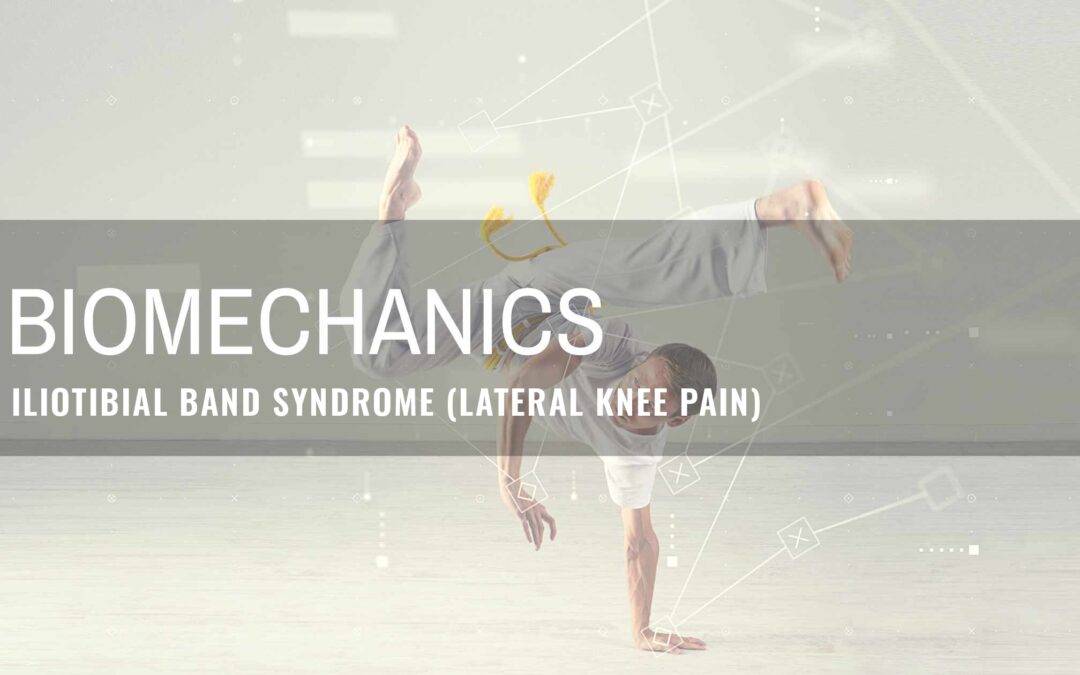ILIOTIBIAL PAIN SYNDROME (ITBS)
One more very common overuse injury of the knee is a condition referred to as IT Band. This pain is usually felt along the outside of the knee with repetitive activities like cross country skiing, running, cycling, hiking, and/or walking. This is very commonly seen in the clinic. Like all overuse injuries, the symptoms are a sign of an underlying culprit. One that may be multifactorial.
But most likely FIXABLE.
SO WHAT EXACTLY IS IT BAND SYNDROME?
ITBS refers to a medical condition where a tendon on the anterior-lateral (front-outside)portion of the thigh down to the knee, the iliotibial (IT) band, may become inflamed due to excess pressure and stress on the surrounding soft tissue and synovial fluid. This causes tenderness and pain in the lower leg. Usually the outside portion of the knee.
HOW DOES THIS HAPPEN?
Like most overuse injuries, ITBS develops most likely as a result of both extrinsic and intrinsic factors. Extrinsic factors like training volume, surface material, shoewear, etc… Intrinsic factors like flexibility, strength, mechanics
The IT band works in conjunction with the tensor fascia latae (TFL), a muscle located at the front of the hip, acting like a stretchy rubber band to help flex and retract the hip. It also receives most of the tendon of the gluteus maximus.
When we overwork the legs, such as in running or skiing, we can inflame the soft tissues and the surrounding area. Theories of the origin of this pain include friction on the femoral lateral epicondyle or highly innervated fat pads along the lateral knee. It is debatable in the available literature.
However what we do know is…
ITBS often occurs as an overuse injury where we do not engage our butt, ankle, and feet muscles properly during repetitive movements with our legs (walking, running, cycling, hiking, biking, etc.).
This means that the muscles surrounding our legs have to work extra hard to stabilize us and as a result, the tendon (IT band) or surrounding tissue running along the front-lateral side of the leg becomes irritated.
These are some of those GLOBAL MOVEMENT SYSTEMIC COMPENSATIONS playing out specifically as we’ve mentioned before.
Are there any warning signs to be aware of?
- Irritation and inflammation around the knee
- Pain and tenderness with flexion and extension movements of the leg
- Underactive butt muscles
- Foot pronation
- Tight calves
WHAT CAN YOU DO TO FIX THIS?
To address ITBS, it is important to strengthen the glutes, and release the calf muscles to stabilize the hip joint. We would recommend the following exercises:
- Release – TFL & Piriformis 60 sec each
- Activate – Glute Med/Min – Prone Hip Extension w/medial rotation 2 x 20
- Integrate – Split stance w/contralateral arm extension 2 x20
- Strengthen – Medial Hamstring Curls 2 x 20
With these changes made, your body will be able to more efficiently move and
transmit the forces required for your activity.
Thus, decreasing the likelihood of sharp lateral knee pain.
And better yet… IMPROVING PERFORMANCE!
Again as always, in the case that these changes do not help, there are more
individualized treatment options available like manual therapy/mobilizations and other modalities that a skilled physical therapist or movement specialist may be able to assist with.
And Remember… YOUR BODY WAS DESIGNED TO MOVE!
1. Fairclough J, Hayashi K, Toumi H, Lyons K, Bydder G, Philips N, Best TM, Benjamin M. The functional anatomy
of the iliotibial band during flexion and extension of the knee: implications for understanding iliotibial band
syndrome. J Anat, 2006 Mar; 208(3): 309–316. doi: 10.1111/j.1469-7580.2006.00531.x
2. Noehren B, Schmitz A, Hempel R, Westlake C, Black, W. Assessment of strength, flexibility, and running
mechanics in men with iliotibial band syndrome. Journal of Orthopaedic & Sports Physical Therapy, 2014
February 28, 44(3) 217-222. https://www.jospt.org/doi/10.2519/jospt.2014.4991
3. Shamus J, Shamus E. The management of iliotibial band syndrome with a multifaceted approach: a double
case report. Int J Sports Phys Ther. 2015 Jun; 10(3): 378–390.





